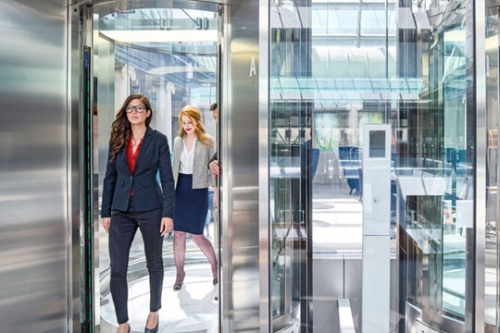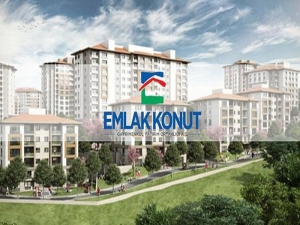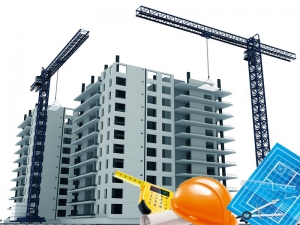
In this issue, we deal with the annual inspections and controls of the elevators, as being one of the major items of our country's agenda. Issuance of the Periodical Elevator Control Regulation by the Ministry as of the beginning of May this year has made this file subject of ours become more of an issue. Yet the annual elevator controls have been one of the major issues on which the sectoral stakeholders have been making great effort, and spending countless work hours. In this respect, we feature esteemed figures of the sector as our guest authors to share with us the actual process they experience on the site, as well as their opinions regarding the new regulation, in order to portray the big picture as a whole. We hereby thank each and every one of them for sharing their precious contributions with our readers.
Playing a major role in our mobility nowadays, elevators have been serving for the people nearly one hundred and fifty years. In this era, throughout which the people have been ever-increasingly on the move towards cities, our living quarters have tended to expand vertically as a consequence of the increase in the land values, and this has made the elevators constitute an indispensable part of our lives.
Having passed through various phases, become safer and more comfortable in parallel with the changes in the technology, and having thereby made our lives much more easier since the very date of its invention, the elevators, like all other mechanical systems, have an economic life. It is imperative to have this system undergo periodical maintenance and control so as not to gain maximum performance throughout its economical life, as well as to extend the duration of the said lifespan. There are a series of rules applicable to the overall system, including each and every one of the components that constitutes the elevator as a whole, from its manufacture, to its market release, and from the beginning till the end of its economical life. The rules in question have been regulated by various legislations.
Historical process of the Elevator legislation in Turkey
In our country, the elevators not only are manufactured, and released to the market, but also undergo maintenance and controls as being subject to such legislations, including the regulations, standards, communiqués etc. that are issued by various public institutions, including the Ministry of Industry and Technology being in the first place. First legislation regarding the elevators was enacted in 1946 by the Ministry of Public Works of the time, namely the Ordinance on the Elevators and Their Installation and the Public Scientific Specifications Thereof. Following the said ordinance, the first regulation issued in this respect was the “Elevator Regulation”, published on the Official Gazette, dated 12.05.1989, and put into effect, which also mentioned of the “annual controls” of the elevators. As being similarly stipulated in all the elevator regulations amended thereafter, it was deemed as a mandatory request to have the elevators undergo annual control.
Out of this regulation, which was issued by being updated from 1989 to 2008 under the title of Elevator Regulation, the section, titled Operation and Maintenance was separated, and has been put into effect as a singular regulation. As of 2015, Elevator Operation, Maintenance, and Periodical Control was put into effect, and the Periodical Control articles thereof were separated, and turned into a singular regulation at the later stage. Having been regulated by a singular regulation at the beginning, the elevator legislation has evolved under various titles in parallel with the EU harmonization process, advancing technology, and with the respective necessities. Such legislative regulations and updates are important for revealing the dynamism of the sector.
Currently applicable Elevator Regulation No.2014/33/AB, dated 29.06.2016, has been designated with the intent to supply the market with elevators conforming to the essential health and safety requirements. The Elevator Maintenance, Operation, and Periodical Control Regulation, having been issued finally on 24.06.2015, is currently in effect. The Elevator Periodical Control Regulation that regulate the periodical controls of the elevators, on the other hand, has been enacted as of 04.05.2018.
All these regulations have been designated with the intent of setting up the rules applicable to the operation, maintenance, and annual control of the elevators, inspection of their maintenance and service processes, and to their guarantee and after-sale services in order to have the elevators, which are used in the lifting of people and loads, operated in a way not to risk the health and safety of the environment, people, and other living things, after they are put into service.
As a consequence of the insertion of EU technical legislation into Turkish Legislation in parallel with the EU membership process, and following the adoption of international standards as Turkish Standards, numerous standards have thereby been harmonized with EN standards, and such harmonized standards within EN 81 family have been adopted as Turkish Standards.
The periods in which the importance of Elevator Periodical Controls increased
As it is known, before 2012, the elevators were being controlled either by the Municipalities where the respective buildings were domiciled, or by the Governorates for the buildings domiciled outside municipal borders, or by the institutions and organization empowered to issue building licenses by virtue of the respective laws after 2 years as from the operational dates of the elevators, and no less than once a year thereafter. In view of their inadequacy, these controls have been commissioned to A-Type Inspection Institutions in line with the respectively arisen necessities as from 01.01.2012 according to the Elevator Maintenance and Operation Regulation, enacted as of 18.11.2008. Having been regulated by virtue of the Communiqué on the Methods and Principles Applicable to A-Type Inspection Institutions Commissioned with the Annual Elevator Controls, which was issued as of 14.08.2012, and became effective 2 months later, this application was given its final form within the frame of the Elevator Periodical Control Regulation, enacted as of 2018.
The A-Type Inspection Institutions, which perform the annual elevator controls in Turkey, are accredited by TÜRKAK (Turkish Accreditation Agency) according to TS EN ISO IEC 17020 Standard, and commence their control activities upon being approved by the Ministry. The number of the A-Type Inspection Institutions, which have obtained approval for elevator inspections, is 30 as as of August 2018. In line with the protocols they entered into with the Municipalities, where the respective buildings were domiciled, or with the Provincial Special Administrations, for the buildings domiciled outside municipal borders, these institutions perform the controls of all the elevators being operated thereat in accordance with the control lists and rules contained in the respective regulation, and in the annex thereof.
First comprehensive annual controls
Elevators were undergone comprehensive controls for the first time in 2012 in line with the control lists drawn up in the course of the studies conducted by the Elevator Technical Committee, established under the auspices of the Ministry, and those of the sub-commission in which I personally took part. In these controls, as a result of which all the deficits and problems came to the fore retrospectively, three out of four of the elevators were affixed with red, namely “unsafe” labels. The percentage of the elevators affixed with green, namely “safe” labels was only 14%. Various reasons may be shown regarding this result, which has made a tremendous impact sector-wide. Among many such reasons, substantial number of the elevators having not been undergone regular maintenance and controls until then being in particular, elevator companies being encountered with a comprehensive inspection for the first time, and lagged behind, failure of the A-Type Inspection Institutions in enrolling qualified and experienced personnel, lack of attention paid to the elevators by the building managements, and above all substantial number of elevators in our country really deserving this label may be shown as being the reasons in this respect. The critical result attained from these initial controls was that, we were faced with the actual conditions of the elevators which gave rise to many undesired accidents, despite people’s lives were confided in them. Public authorities thereby mandated the conduct of controls on the elevators in Turkey, and revealed whether they were operable or not, while the process and the results attained therefrom began to be closely monitored by the sector and the public authorities. Thus, this was a good opportunity to derive lessons from. And so it was!
This problem, which was brought into light as a result of the annual controls, was acknowledged, dealt with, and the elevators were attached with more importance than ever before. Although the desired level has not been reached yet, it is a common view that, the elevators have been put under a regular inspection for the sake of both its users, and its manufacturers. In the following phases of this critical intervention launched as of 2012, the deficiencies being inspected have begun to be corrected by means of various updates in the control lists, and in the application processes as well, thanks to the elevator companies’ and inspection institutions’ exchange of their on-site experiences with the public authorities. The number of unsafe elevators has considerably decreased in each passing year as a result of the updates in the legislation, and the good practices implemented in the sector. Elevators are classified under four groups according to the results of the periodical controls they undergo, which are namely perfect (green), slightly defective (blue), defective (yellow), and unsafe (red). You may find detailed information regarding these items in the articles authored by the esteemed stakeholders of the sector, who made contributions to our file.
According to the ministerial data, throughout the controls conducted in between 2012-2017, the ratio of the red labeled elevators lowered from 74% to 53%, and that of the green labeled elevators raised from 14% to 23%. There are two major factors that had impacts on the decrease in the number of the red labeled elevators, and on the increase in the number of green labeled elevators during this period of six years. First of them is that, by virtue of the regulation enacted in 2015, it has become mandatory to have the new elevators affixed with green labels, so as to have them registered, while the second of them was that, as we have mentioned above, the controls have begun to be conducted by a serious manner. On the other hand, the increase in the ratio of green labeled elevators, having reached up to 39% in 2014, seems to have lost its pace (21% as of 2017) upon the addition of the blue label within the respective classification. However, in view of the data at hand, this positive change shall continue increasingly in the years to come.
The following section of our file consists of the precious opinions of the NGO’s, A-Type Inspection Institutions, Elevator Companies, and Stakeholders from the Sector on the issue in question.
May all the elevators in our country undergo controls, and be affixed with green labels.



